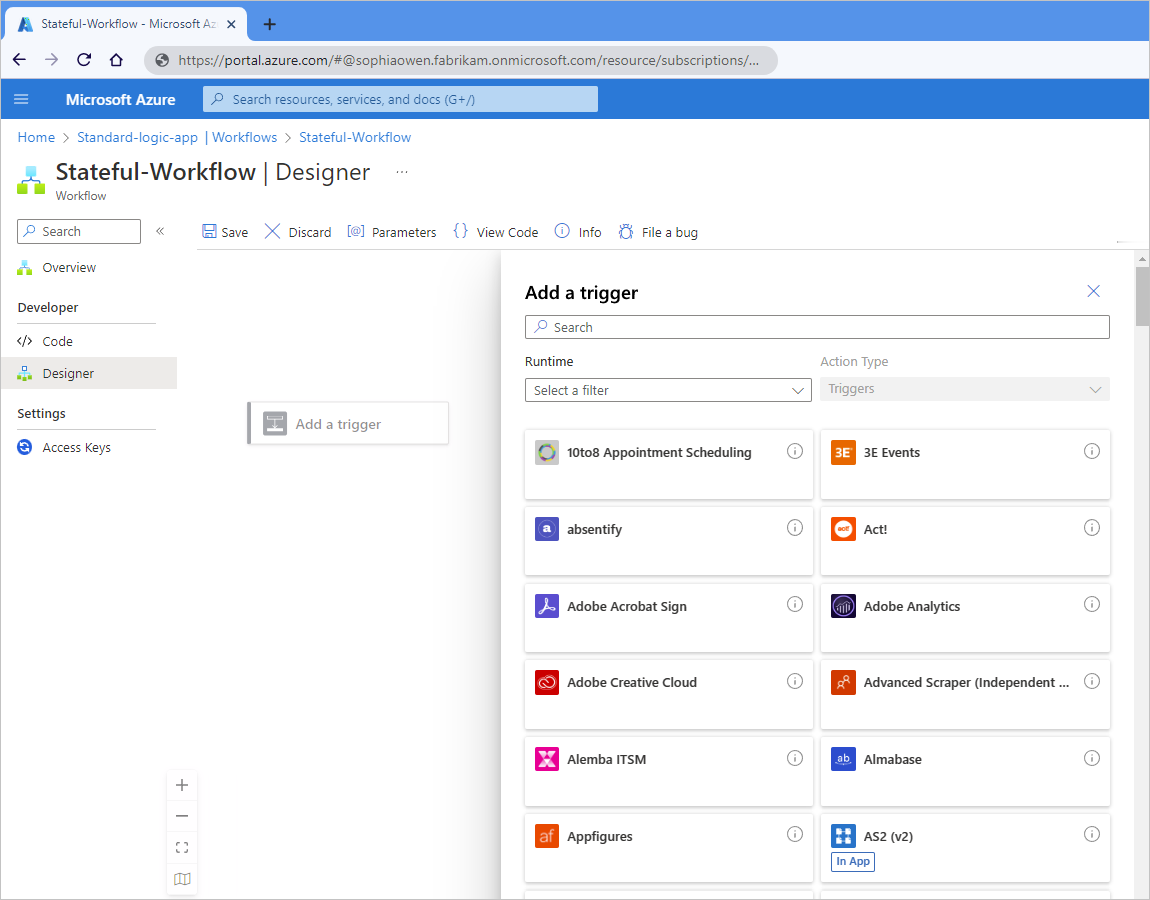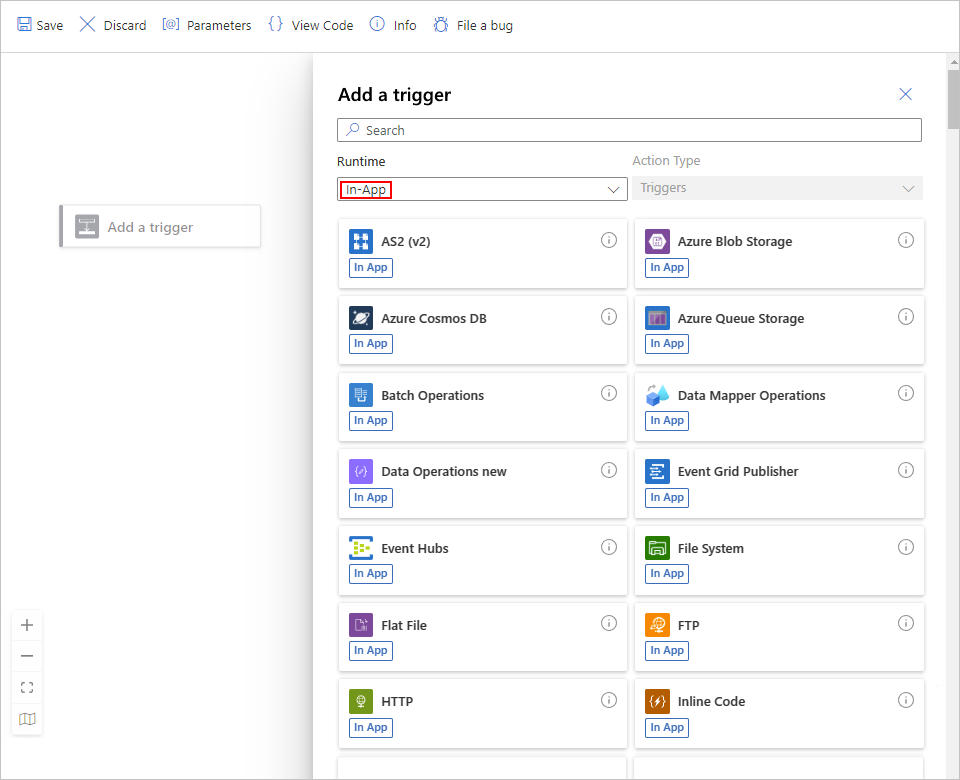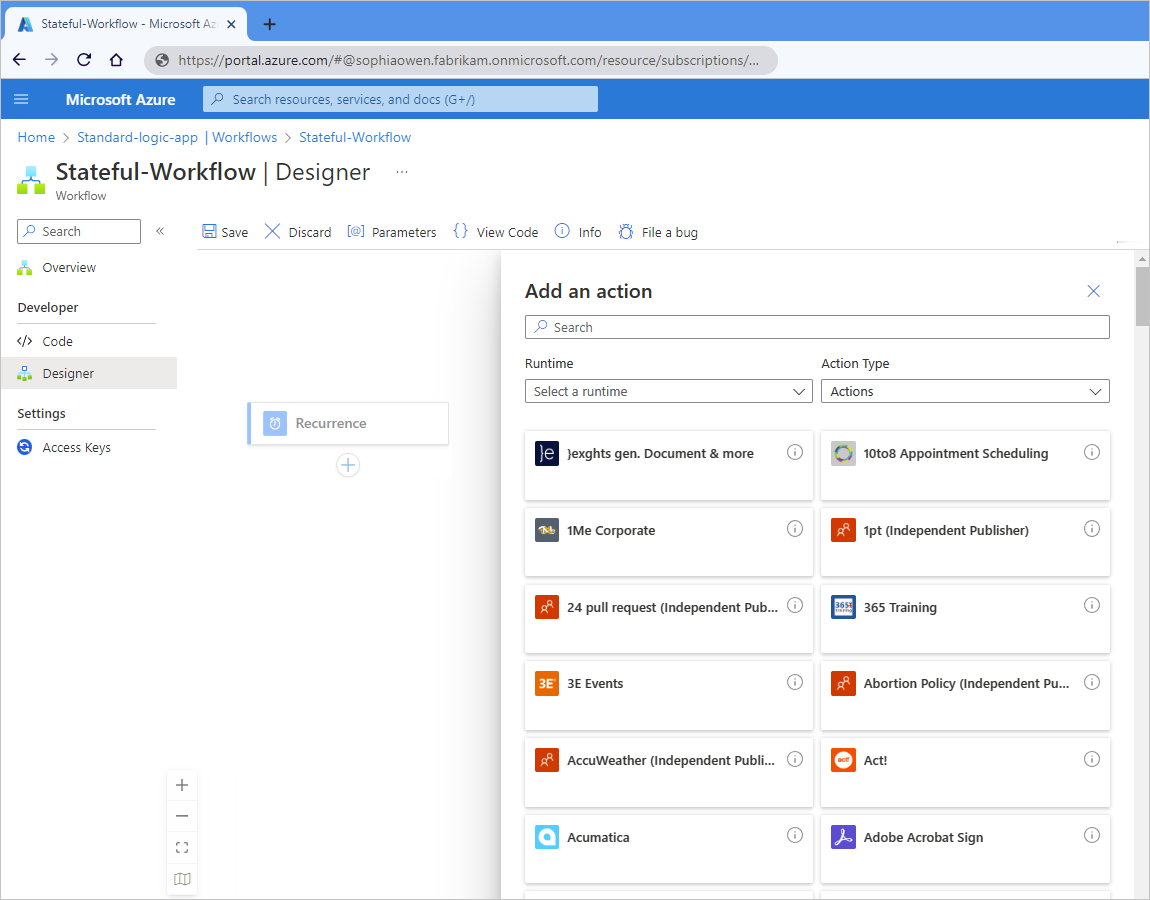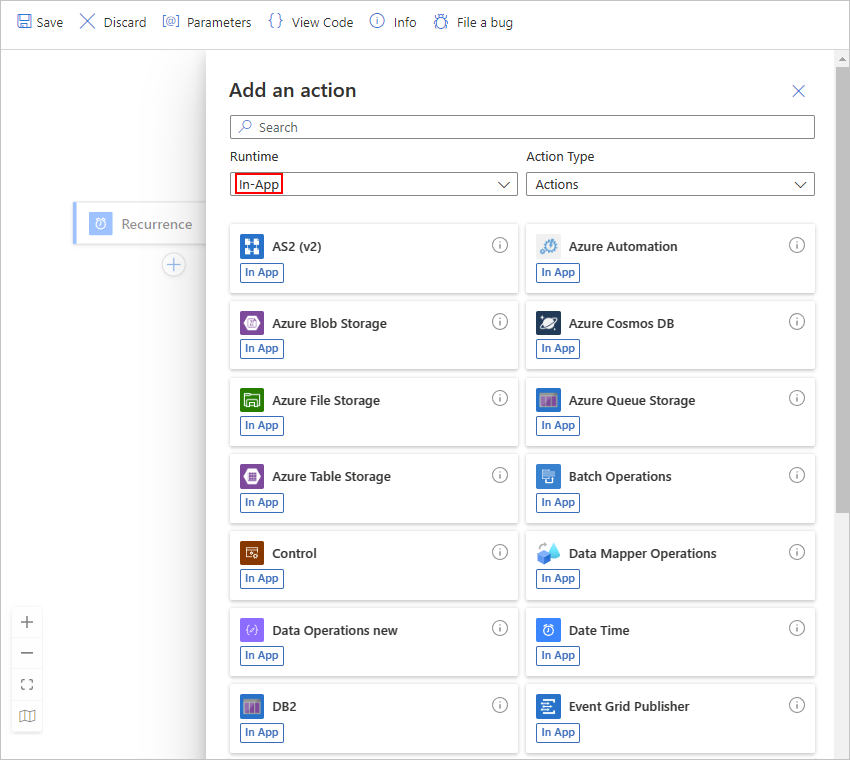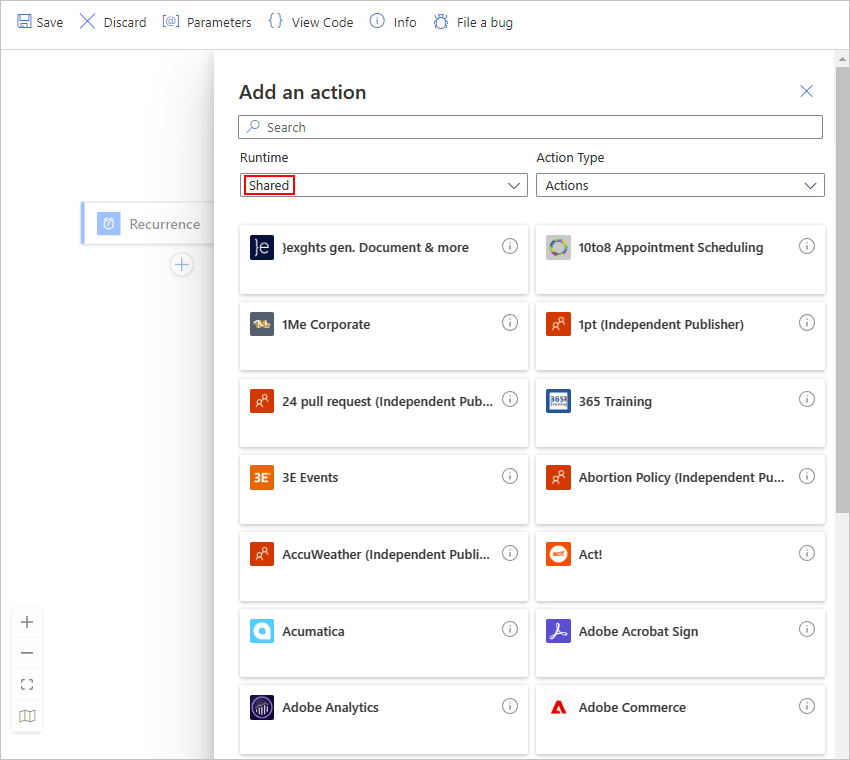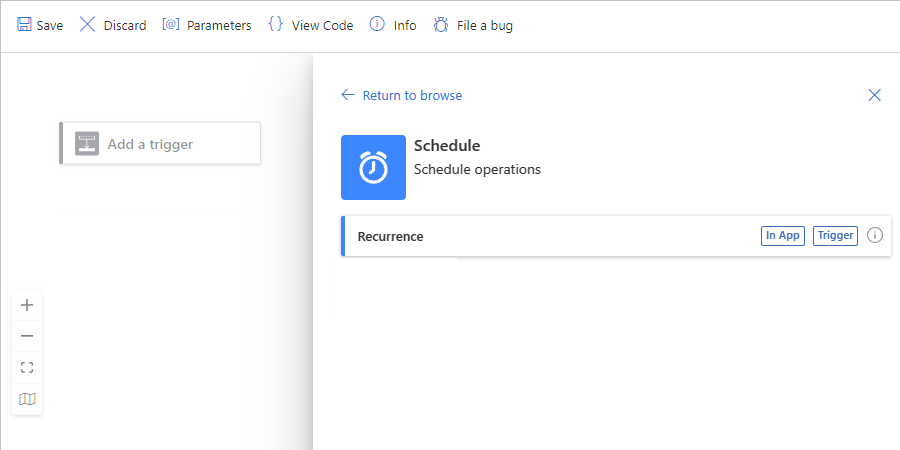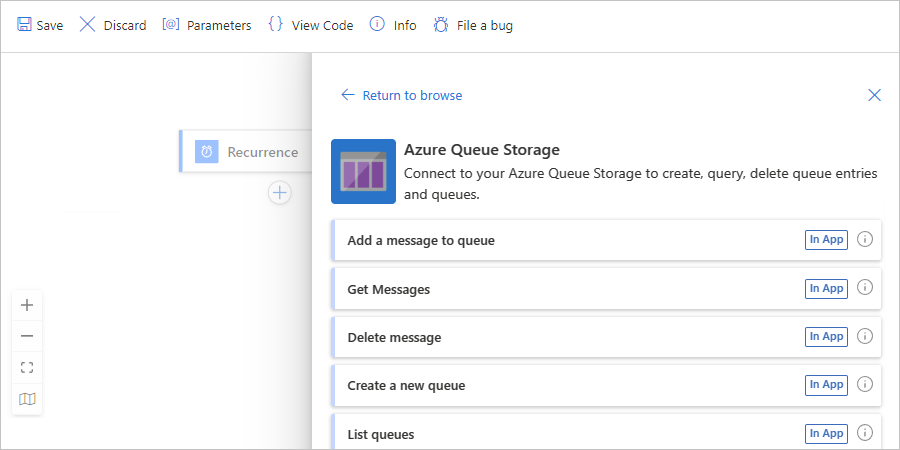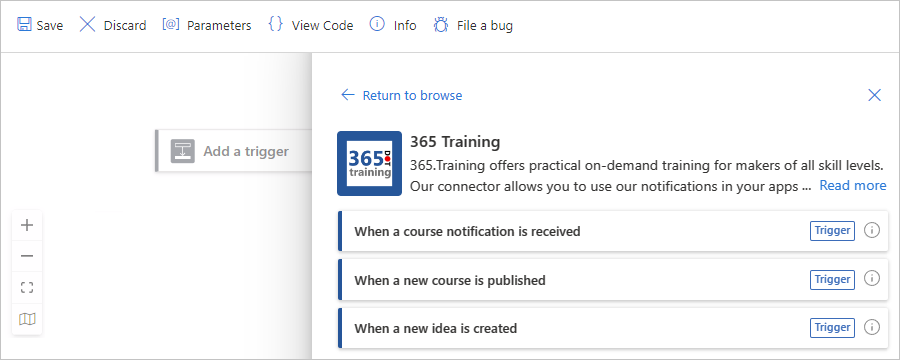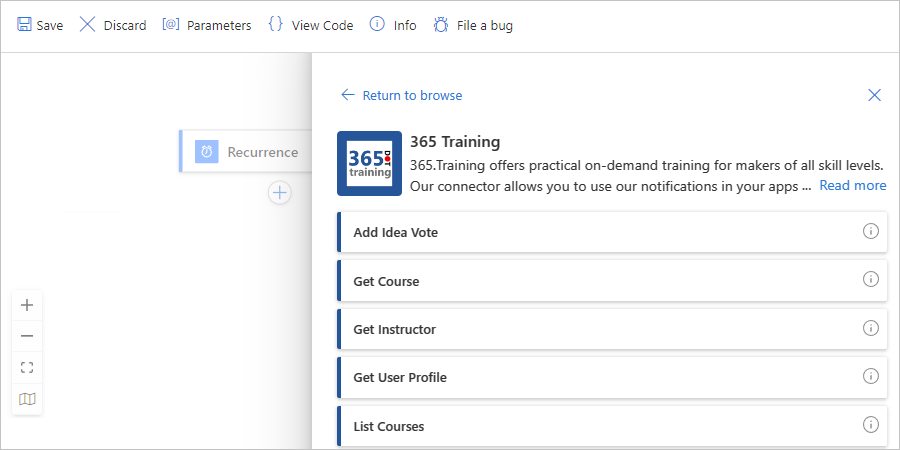Build a workflow with a trigger or action in Azure Logic Apps
Applies to: Azure Logic Apps (Consumption + Standard)
This how-to guide shows how to start your workflow by adding a trigger and then continue your workflow by adding an action. The trigger is always the first step in any workflow and specifies the condition to meet before your workflow can start to run. Following the trigger, you have to add one or more subsequent actions for your workflow to perform the tasks that you want. The trigger and actions work together to define your workflow's logic and structure.
This guide shows the steps for Consumption and Standard logic app workflows.
Prerequisites
An Azure account and subscription. If you don't have an Azure subscription, sign up for a free Azure account.
To add a trigger, you have to start with a logic app resource and a blank workflow.
To add an action, you have to start with a logic app resource and a workflow that minimally has a trigger.
The following steps use the Azure portal, but you can also use the following tools to create a logic app and workflow:
Consumption workflows: Visual Studio or Visual Studio Code
Standard workflows: Visual Studio Code
Add a trigger to start your workflow
In the Azure portal, open your Consumption logic app and blank workflow in the designer.
On the designer, under the search box, select All so that you can search all the connectors and triggers by name.
The following example shows the designer for a blank Consumption logic app workflow with the All group selected. The Triggers list shows the available triggers, which appear in a specific order. For more information about the way that the designer organizes operation collections, connectors, and the triggers list, see Connectors, triggers, and actions in the designer.
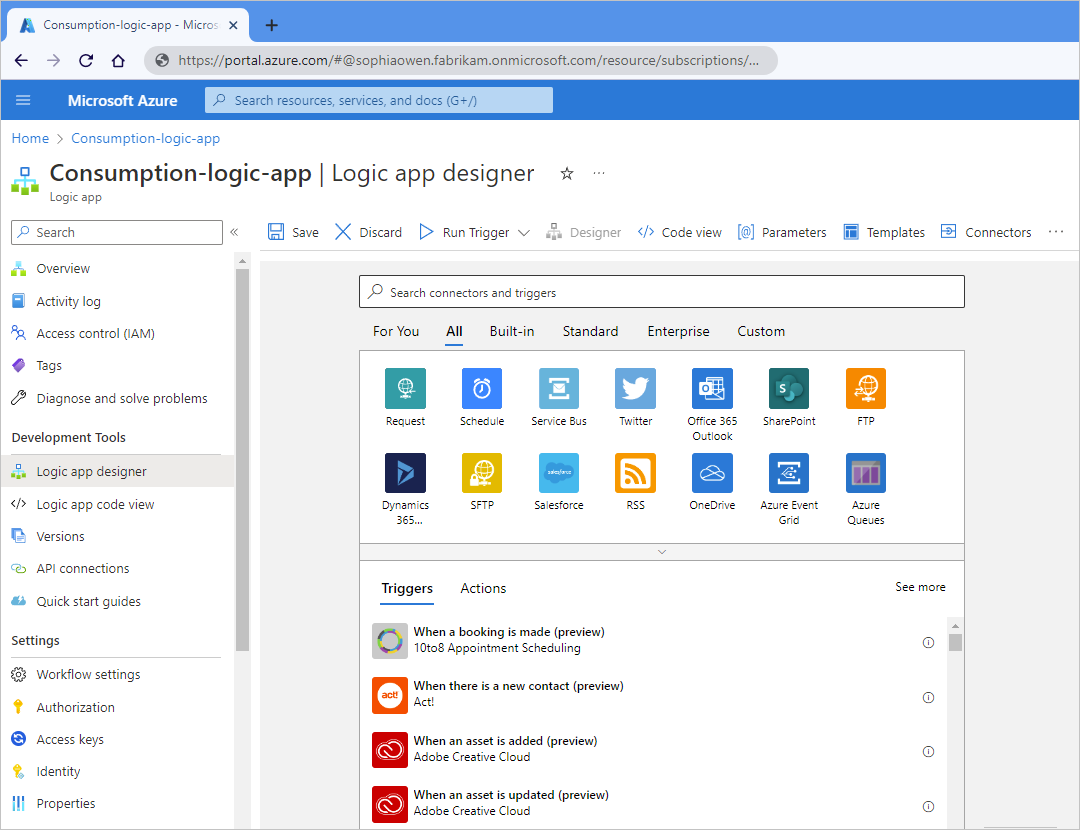
To show more connectors with triggers in the gallery, below the connectors row, select the down arrow.

The designer uses the following groups to organize connectors and their operations:
Group Description For You Any connectors and triggers that you recently used. All All connectors and triggers in Azure Logic Apps. Built-in Connectors and triggers that run directly and natively within the Azure Logic Apps runtime. Standard and Enterprise Connectors and triggers that are Microsoft-managed, hosted, and run in multi-tenant Azure. Custom Any connectors and actions that you created and installed. In the search box, enter the name for the connector or trigger that you want to find.
From the triggers list, select the trigger that you want.
If prompted, provide any necessary connection information, which differs based on the connector. When you're done, select Create.
After the trigger information box appears, provide the necessary details for your selected trigger.
When you're done, save your workflow. On the designer toolbar, select Save.
Add an action to run a task
In the Azure portal, open your Consumption logic app and workflow in the designer.
On the designer, choose one of the following:
To add the action under the last step in the workflow, select New step.
To add the action between existing steps, move your pointer over the connecting arrow. Select the plus sign (+) that appears, and then select Add an action.
Under the Choose an operation search box, select All so that you can search all the connectors and actions by name.
The following example shows the designer for a Consumption logic app workflow with an existing trigger and shows the All group selected. The Actions list shows the available actions, which appear in a specific order. For more information about the way that the designer organizes operation collections, connectors, and the actions list, see Connectors, triggers, and actions in the designer.
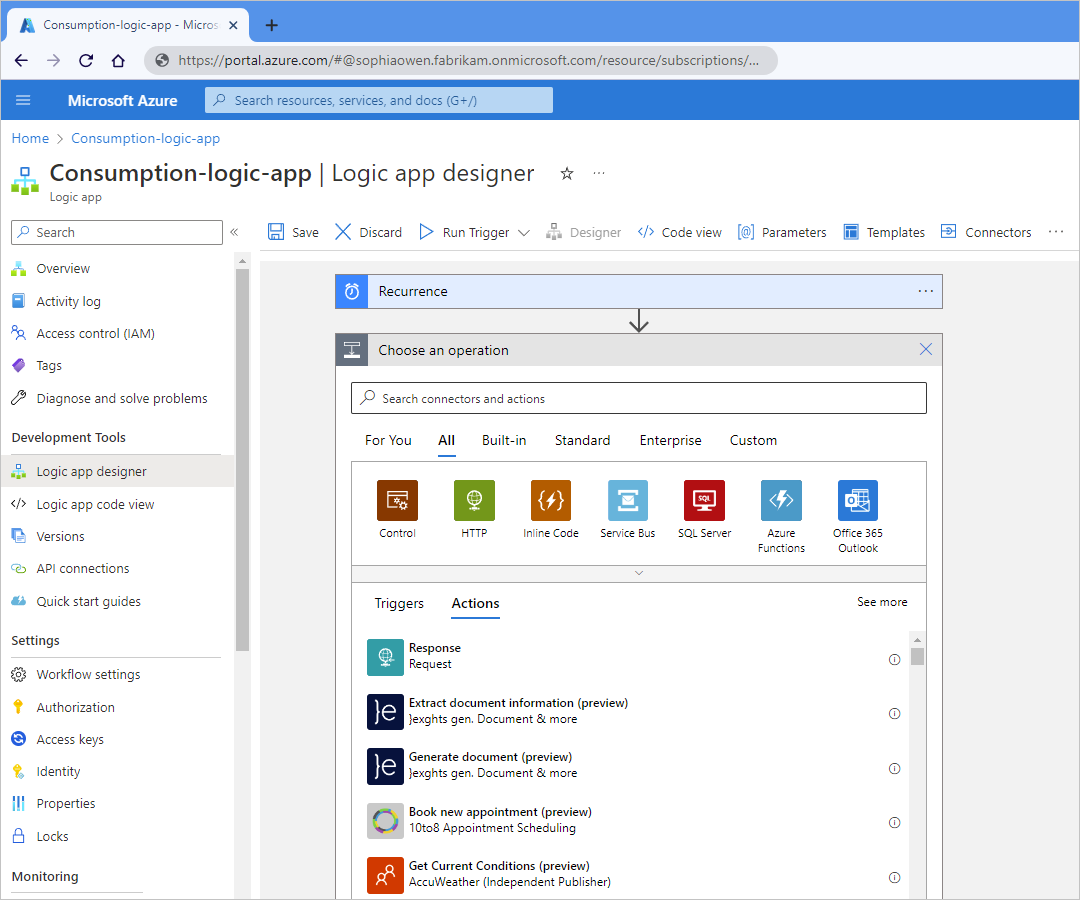
To show more connectors with actions in the gallery, below the connectors row, select the down arrow.
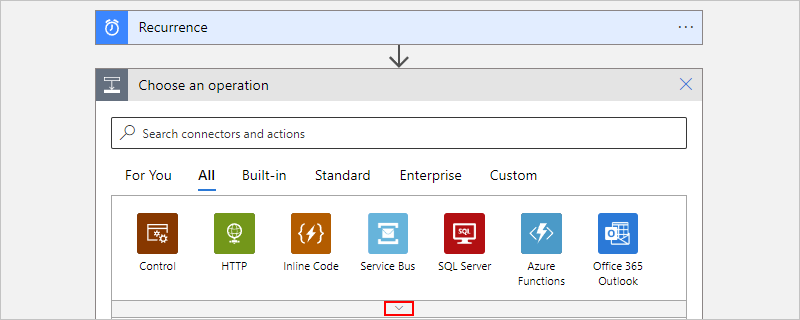
The designer uses the following groups to organize connectors and their operations:
Group Description For You Any connectors and actions that you recently used. All All connectors and actions in Azure Logic Apps. Built-in Connectors and actions that run directly and natively within the Azure Logic Apps runtime. Standard and Enterprise Connectors and actions that are Microsoft-managed, hosted, and run in multi-tenant Azure. Custom Any connectors and actions that you created and installed. In the search box, enter the name for the connector or action that you want to find.
From the actions list, select the action that you want.
If prompted, provide any necessary connection information, which differs based on the connector. When you're done, select Create.
After the action information box appears, provide the necessary details for your selected action.
When you're done, save your workflow. On the designer toolbar, select Save.
Connectors, triggers, and actions in the designer
In the workflow designer, you can select from hundreds of triggers and actions, collectively called operations. Azure Logic Apps organizes these operations into either collections, such as Schedule, HTTP, and Data Operations, or as connectors, such as Azure Service Bus, SQL Server, Azure Blob Storage, and Office 365 Outlook. These collections can include triggers, actions, or both.
Under the search box, a row shows the available operation collections and connectors organized from left to right, based on global popularity and usage. The individual Triggers and Actions lists are grouped by collection or connector name. These names appear in ascending order, first numerically if any exist, and then alphabetically.
Built-in operations
The following example shows the Built-in triggers gallery:
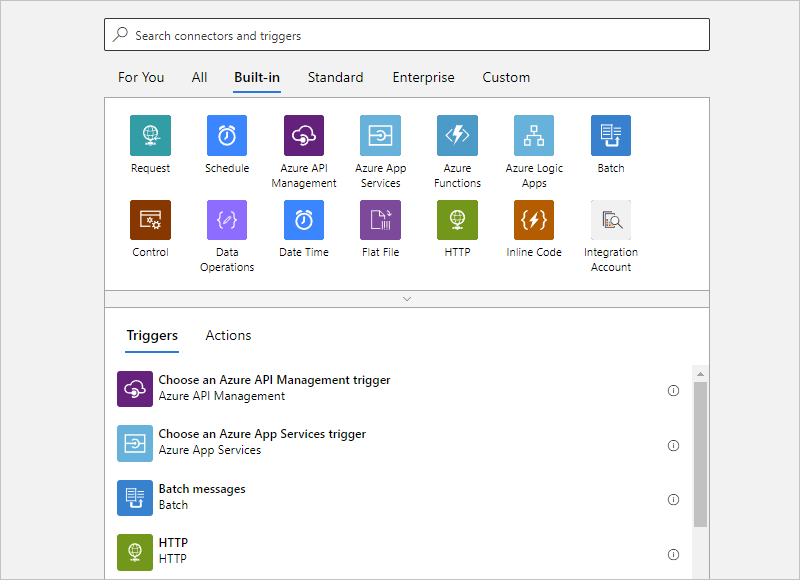
The following example shows the Built-in actions gallery:
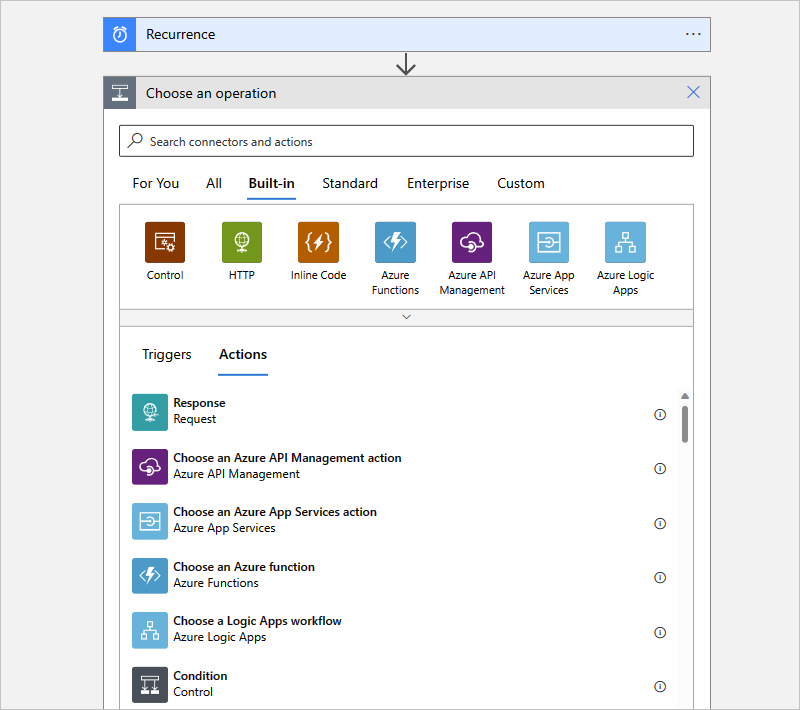
Standard operations
The following example shows the Standard triggers gallery:
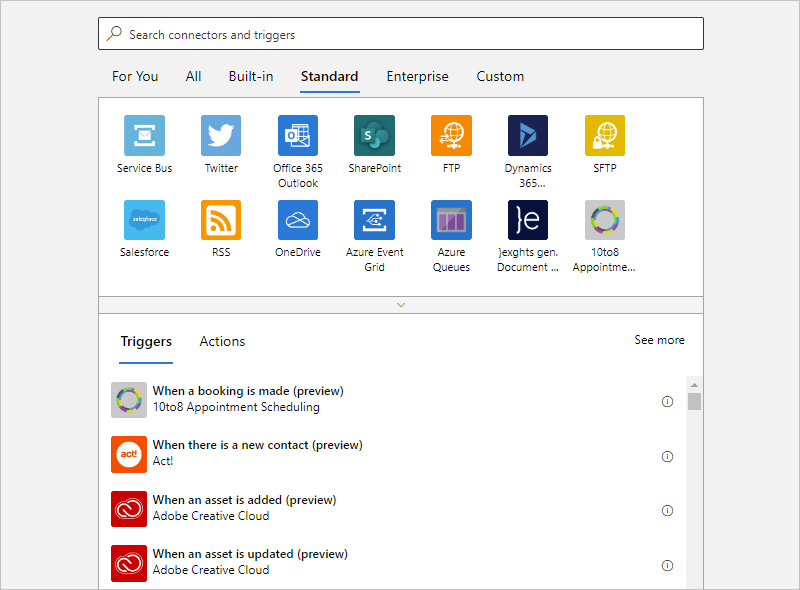
The following example shows the Standard actions gallery:
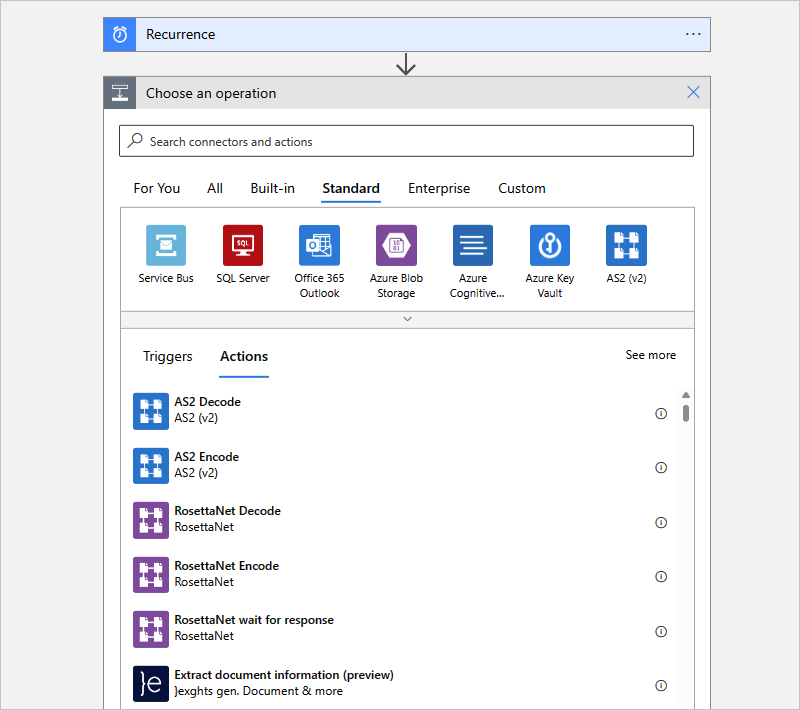
Enterprise operations
The following example shows the Enterprise triggers gallery:
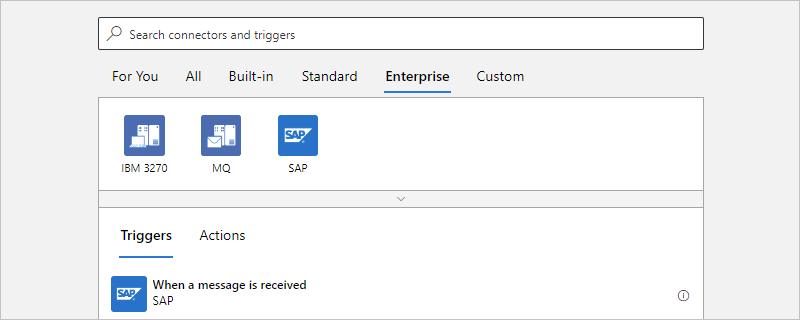
The following example shows the Enterprise actions gallery:
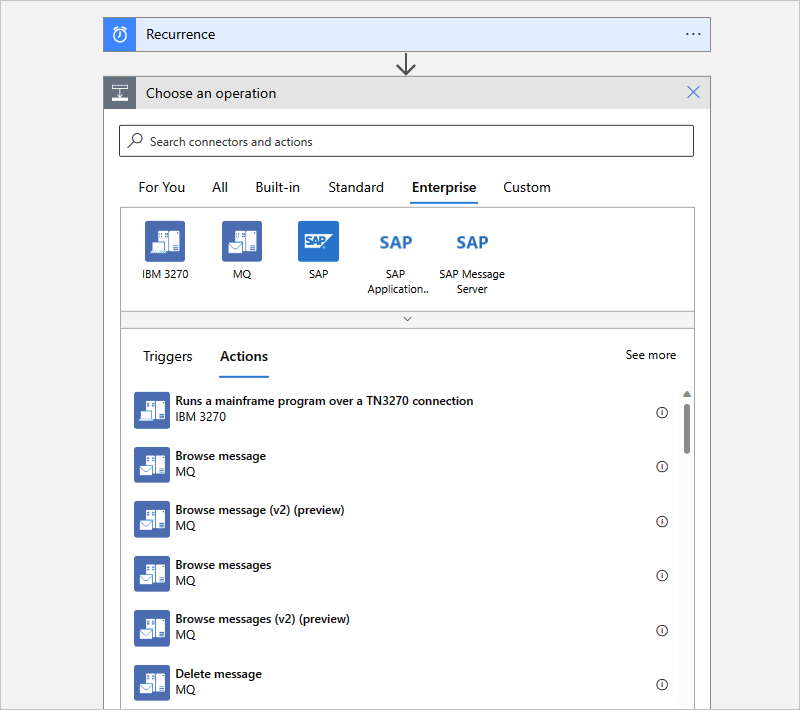
For more information, see the following documentation:
Next steps
Feedback
Coming soon: Throughout 2024 we will be phasing out GitHub Issues as the feedback mechanism for content and replacing it with a new feedback system. For more information see: https://aka.ms/ContentUserFeedback.
Submit and view feedback for
